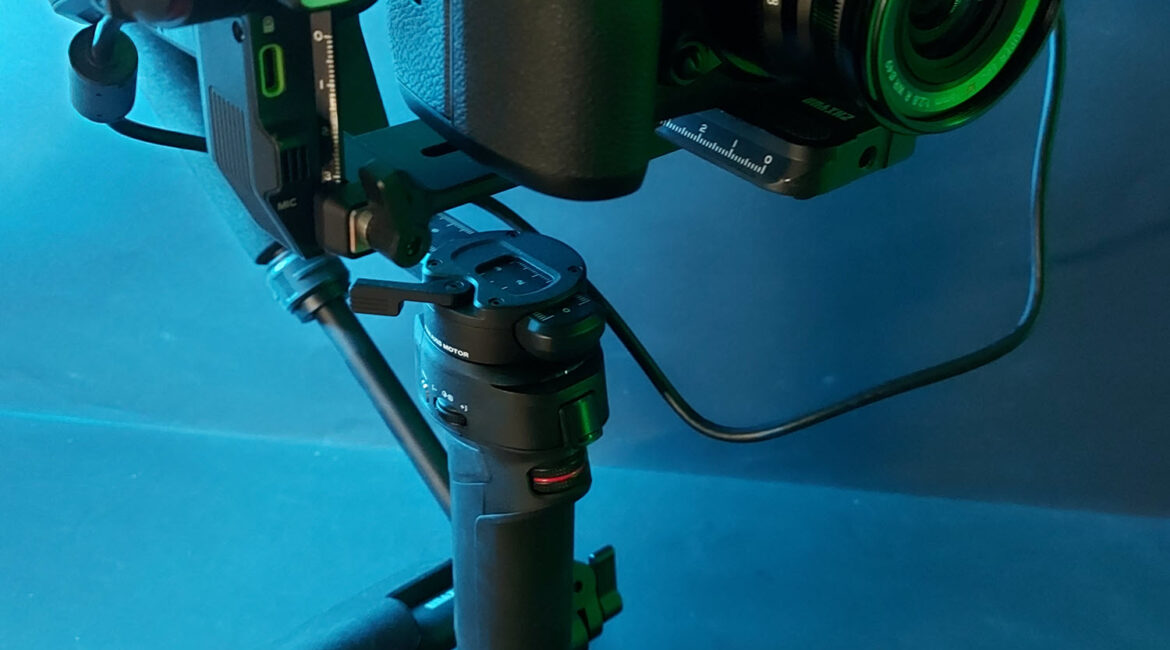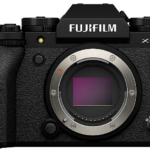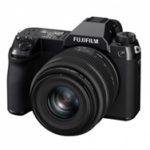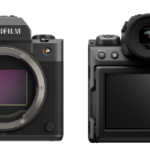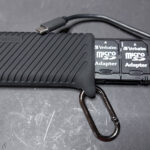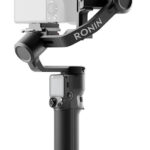Whilst I admire technology, and indeed make a living out of it, I love simplicity of use and a logical approach to things.
As regular and longer term readers will know, I have a background in motor sport and fishing photography / video and still pursue both of these interests when and wherever I can.
So, marry these things together and my fondness for the way photography used to work, and I believe you get the Fujifilm X-H2S. The “S” by the way stands for “Speed” and differentiates this model from itgs sibliong, the X-H2.
This model’s predecessor, the X-H1, that sadly I never had the opportunity to review, was much loved, partly I suspect due to its somewhat retro styling dials and thumbwheels to control functions such as aperture, shutter speed and ISO. I think these are so much easier to come to grips with as against wading through menus and submenus to get the exact function you want, especially if you are not familiar with some of the terminology.
Design and Build
 With the X-H2S, this simplistic approach has been retained despite the camera being jam packed with all the latest in modern camera technology. All the deeper functions are of course still there, and if you really want to scroll through menus you can, but joy of joys, you can personalise all your favourite operations into no less than 10 possible combinations of customisable buttons on the body of the camera.
With the X-H2S, this simplistic approach has been retained despite the camera being jam packed with all the latest in modern camera technology. All the deeper functions are of course still there, and if you really want to scroll through menus you can, but joy of joys, you can personalise all your favourite operations into no less than 10 possible combinations of customisable buttons on the body of the camera.
Speaking of joys, I mentioned in my Fujifilm X-T5 review the other day that I was very much in favour of the placing of the SD card slot under a side flap of the body as against next to the battery on the underside. The X-H2S has this same setup, and to keep up with the extra speed this model has, also added a CF Express Card slot. I’ll get to that in a moment.
The main body feels a lot lighter than it really is at around 660g, and Fujifilm have apparently made the handgrip a little deeper on this model which makes it easier to grasp and make more solid in the hand.
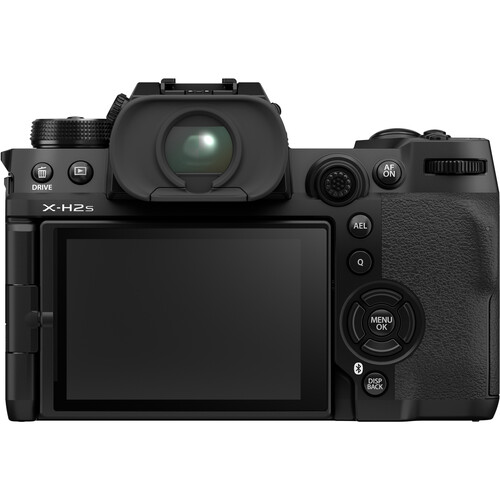 The LCD is fully articulated with both flip-out and swivel options and a very readable 1.62 dot, 3.2” panel, that whilst not brilliant in full sunlight, is adequate. Having said that, this camera is obviously aimed at the sporting / nature person for both still and video imagery, and I have never come across anyone that does not use the viewfinder in their shooting endeavours – which in this case is a 5.76M dot unit with a resolution of 1600 x 1200 pixels.
The LCD is fully articulated with both flip-out and swivel options and a very readable 1.62 dot, 3.2” panel, that whilst not brilliant in full sunlight, is adequate. Having said that, this camera is obviously aimed at the sporting / nature person for both still and video imagery, and I have never come across anyone that does not use the viewfinder in their shooting endeavours – which in this case is a 5.76M dot unit with a resolution of 1600 x 1200 pixels.
Available ports include a full-size HDMI port, and the USB is the latest bang-up-to-date USB-C 3.2 spec giving 10GB /sec.
The battery is said to be good for between 500 and 580 images depending on whether you use the viewfinder or LCD.
Speed
Let’s get to that speed thing I mentioned earlier. There is a lot of techs packed into this camera, most of it unintelligible to lay people. I’ll leave that to the Fujifilm website to describe if you are interested as my belief is akin to if you after car that goes very, very fast on the race track, you don’t really care how it does it, just that it is. And the full list of specifications can be found here.
Suffice that the X-H2S uses what is called a stacked CMOS sensor system that greatly boosts the cameras capability in shooting rates and autofocus frequency of operations. Ally this with the faster write speeds of the CF Express card (with it has to be said, it’s greater expense / GB) and in shooting JPEG images, Fujifilm claim 30 frames / second for over 1000 images continuously, and 20 fps for RAW images.
Ladies and gentlemen, that is quick!
Additionally, the autofocus smarts have been beefed up (and there was recently an update to this too) with the X-H2S able to distinguish and detect between animals, birds, cars, motorcycles, bicycles, aeroplanes, trains and human faces and eyes.
Impressive.
With video, you can shoot 6.2K footage at 30p and in the 4:2:2 10 bit colour space at 1/180th second, thus minimising the rolling shutter effect that CMOS gives.
Recording time is a maximum of 240 minutes at 4K / 60P and there is support for ProRes and RAW as well as F-Log2 with a dynamic range of 14+ stops.
Again, if all that is not exactly clear as to its meaning, it simply says the quality capabilities of the footage are very high indeed.
With that sort of capability, a decent stabilisation system is necessary, and Fujifilm has developed a completely new 5 axis in-body system to cater for the sport shooter / videographer.
Conclusion
If you shop around, you’ll get the X-H2S body for $3.5K with 5c change. I had a 16mm f/2.8 lens to play with, but for the sports / nature shooter, probably the XF150-600mm F/5.6 is a far better option in the real world.
Images were pin sharp, and on both my Zhiyun Weebill and DJI Ronin RS 3 gimbals full support was offered which was a bonus. The ergonomics are such that even with my dud right wrist, I could shoot for a lengthy period of time without fatigue.
As with all camera reviews, I suggest that you go to your local proper camera dealer (as against a chain store – you know who I mean) and kick the doors and slam the tyres so to speak. Cameras are very individual and there is nothing like feeling it and testing it in-shop, which any good dealer will certainly allow. They also know their stuff and not there to simply flog product. These guys want a customer and not just a sale.
I am hoping I can get this camera back at a later date with a suitable lens when I am able to use it for my passion of motor racing once the season has started again.
What say you Fujifilm?

